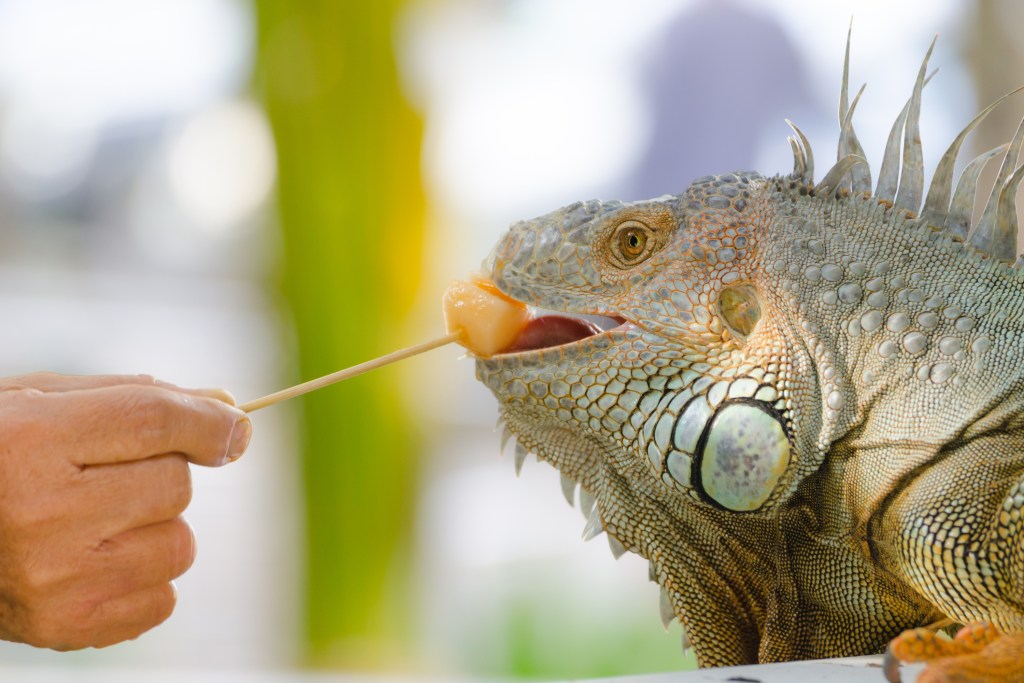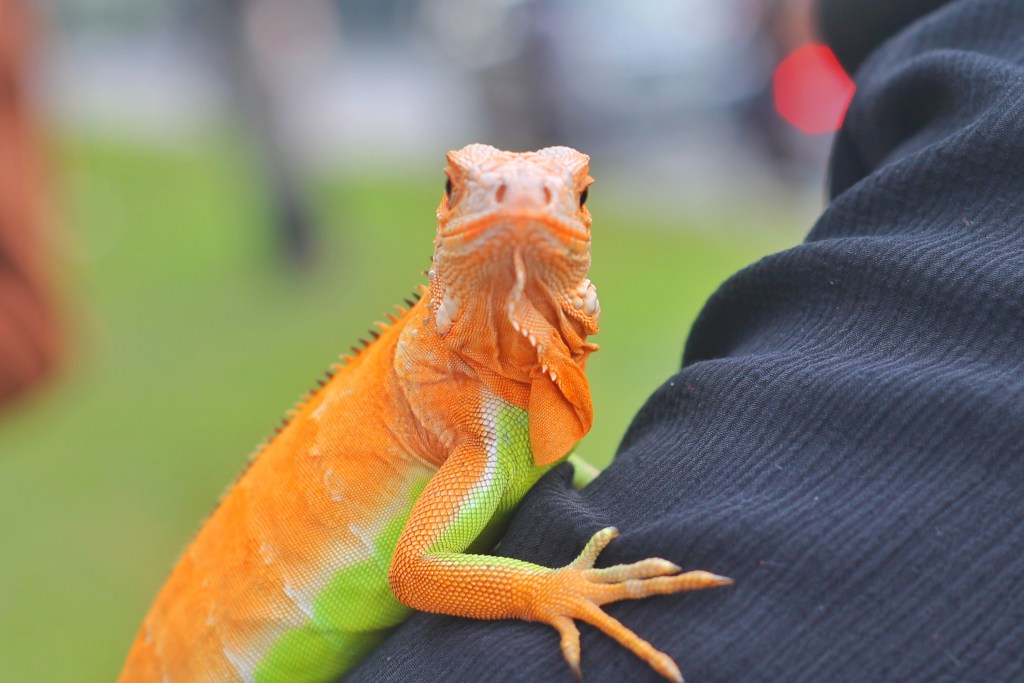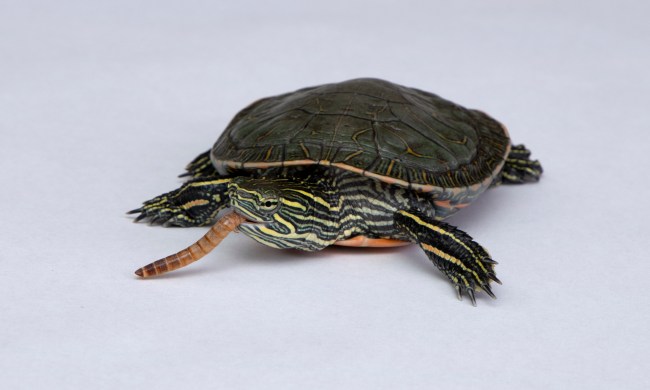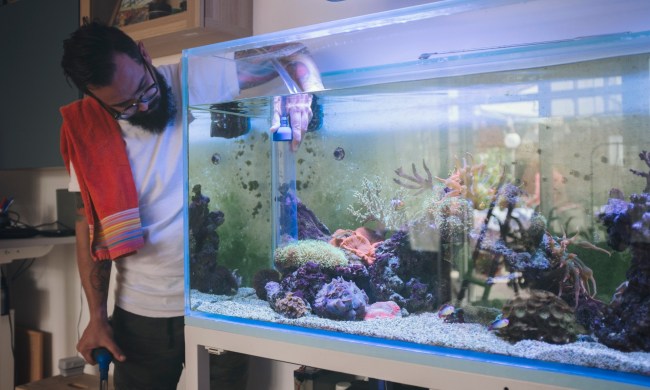Our animals can’t tell us how they feel, so we rely on their subtle cues that give hints about their inner thoughts. One of the ways they let us in on these secrets is through their eating habits. A loss of appetite should set off alarm bells. After all, if you suddenly stopped feeling hunger, you’d get it checked out. While sometimes it’s physical if your iguana is not eating, it also could be emotional. But no matter what, your first call should go straight to your vet — a checkup is in order. If you’re wondering “why won’t my iguana eat?” look through these potential solutions for answers.

Give him the right food
Iguanas are allowed to be picky, and he might turn his nose up at wilted lettuce if that’s what you provide. These herbivores thrive on fresh dark leafy greens, with a few extra snacks mixed in. They don’t like celery or iceberg since those things are made up mostly of water, so you won’t spot him munching happily on the lighter shades of leaves. However, give him a full bowl of kale and carrots, and you’ll see a happy fellow. If you do think undesirable food might be causing the eating problems, mix it up a bit. Everyone has preferences! But avoid feeding him just sugary snacks — he might enjoy strawberries a little too much.
Warm his habitat
In addition to digestive problems, an iguana not eating could signal an issue with his habitat. Specifically, these guys need a pretty balmy enclosure, including a basking area for afternoon sunning. The cage should stay well above room temperature, at 80-plus degrees, with his hot spot closer to 100 degrees. You’ll use a heat-emitting bulb to help keep up the temp and a thermometer to monitor it. All that warmth, though, can make it super dry, and his skin won’t like that. Add a little pool to increase humidity and maintain it at 70%.
Calm your iguana down
Have you ever been too anxious to finish your dinner? Your pet understands. We might jump to the more obvious conclusions like bad food or unpleasant conditions, but he could just be on edge. Unfortunately, even though it’s “all in his head,” stress can have major consequences. Look for other signs like a thrashing tail or open mouth to go along with his hunger strike, and you’ll know it comes from his mental discomfort. Your animal may exhibit some of this when you first bring him home. It will take time to get used to you and your routine together. Some of that is to be expected, but you need to ensure it doesn’t harm him long term. Try to stick to a schedule right away and remember to give him space any time he’s adjusting to something new.

Watch for puberty
Just when you think your little guy has settled in and grown attached, he starts going through new changes. For these lizards, sexual maturity begins at about 18 to 24 months. You’ll get the typical teenage angst during this time. Remember when you adopt a cute baby iguana that he won’t stay that way forever. While both sexes might get a little weird, females fast a bit more than males. During breeding season, she will often skip a few meals, so her food dish could stay full if you’re prepping for a new set of iguanas. Keep in mind, breeding should be handled only by experts. Don’t jump into this if you’ve just gotten interested in herpetology.
Take him to the doctor
OK, you’ve ruled out the basics, which means he may have caught something. Many iguana ailments actually stem from a deeper source. For example, metabolic bone disease, a common problem, results from improper feeding or lighting. But, like us, sometimes our pets just get sick, especially if we have a lot of other animals in the house or we’ve recently taken him on a trip. Look out for typical cold signs accompanying his indifference toward food. If his intake looks good but he’s losing weight, that may indicate a parasite, such as a worm. No matter what, you need to get him to a vet as soon as possible and solve any big things quickly.
Remember, iguanas eat just about every day, so even missing a few mealtimes should be cause for concern. Identify other symptoms, whether physical or emotional, and use these clues to determine what might have sparked his lack of appetite. Once you’ve fixed it, give him a bit of time to come around. But don’t be afraid to go to the reptile doctor if the problem continues. He can’t really go without food for more than a week before he won’t recover, and we want our iguanas to be with us a long time.



